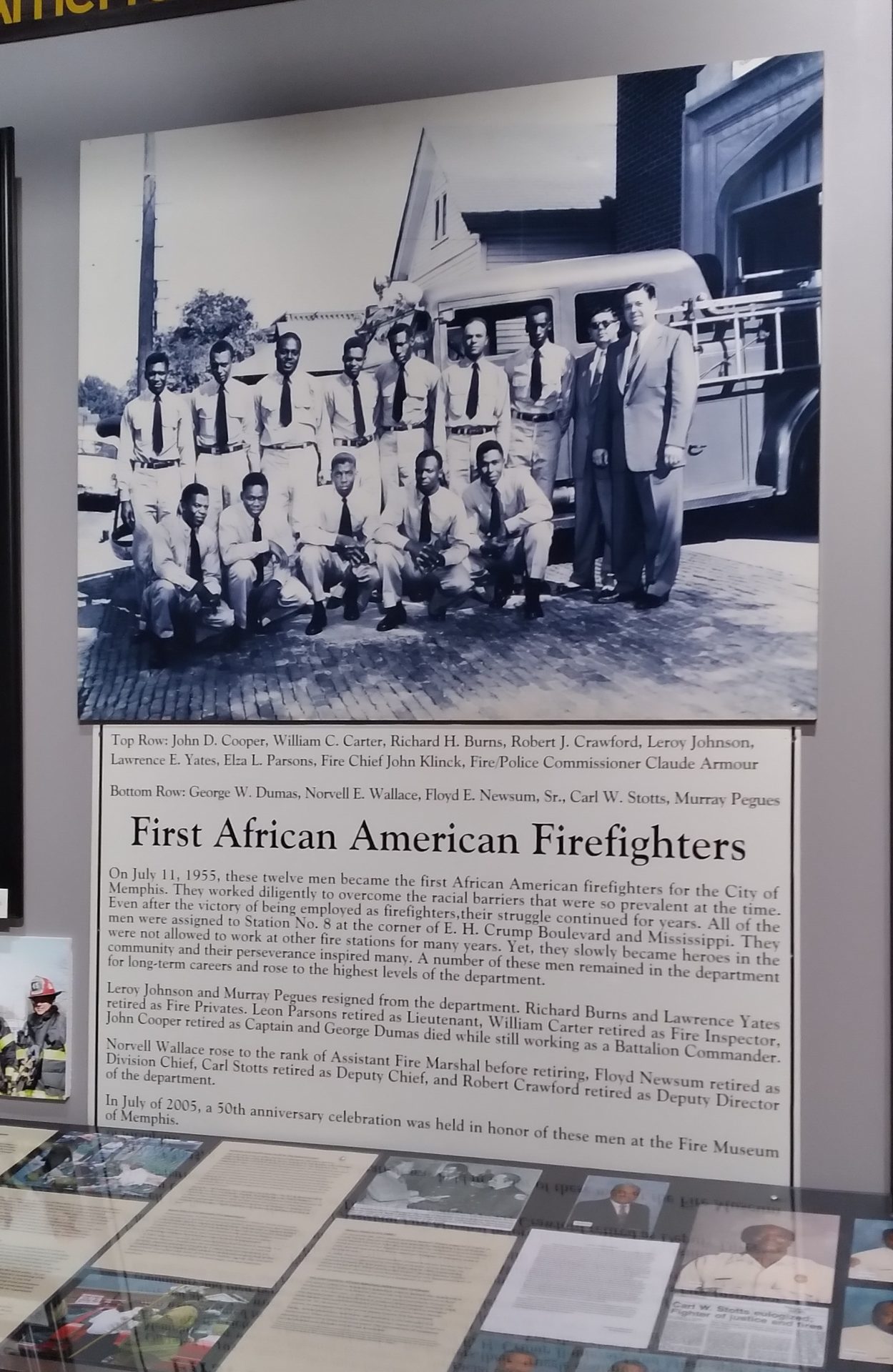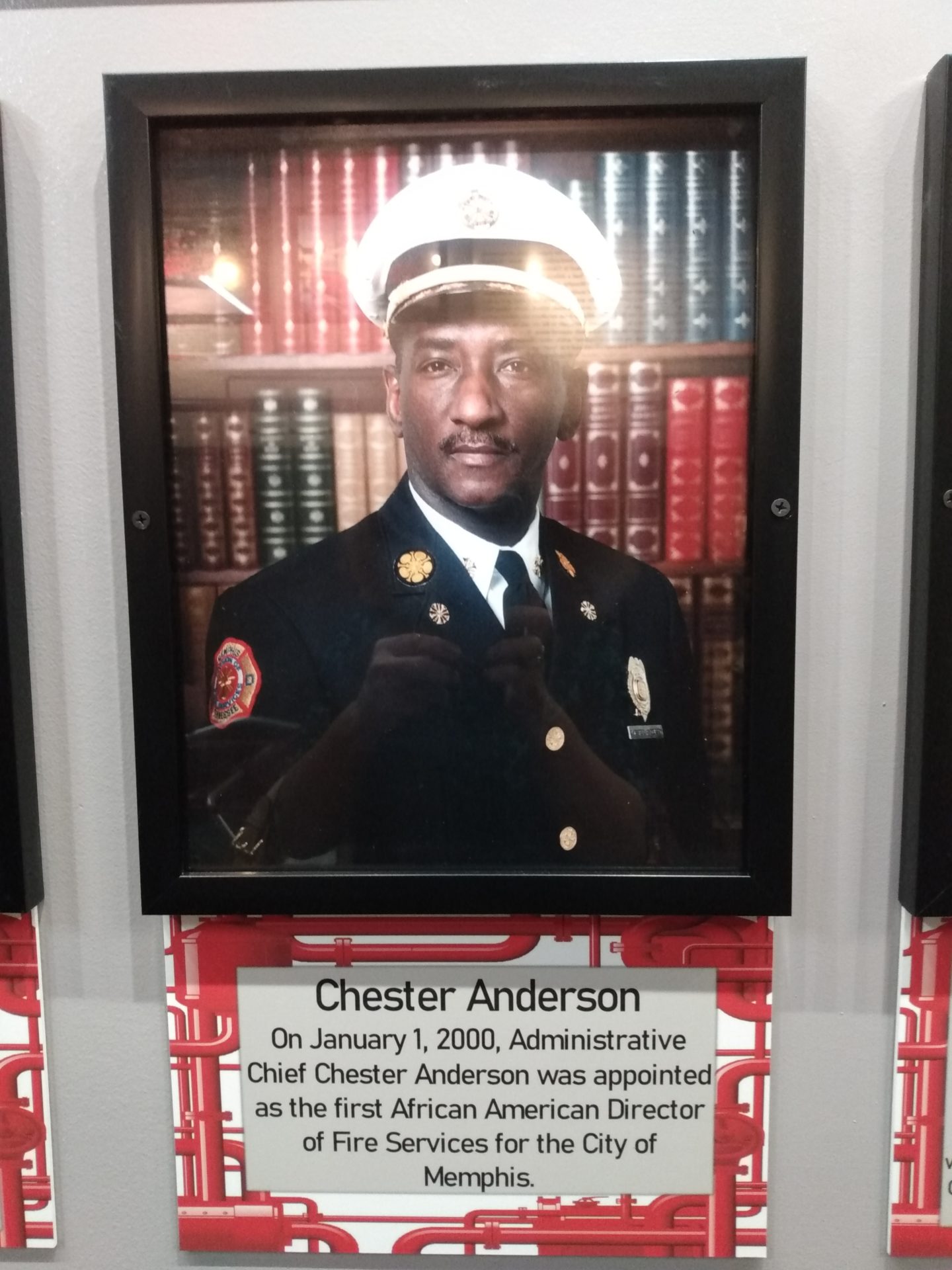Editor’s Note: This story was written by the late Dr. Sybil C. Mitchell for Black History Month 2022. It has been updated to include video tributes to Memphis firefighters.
If you looked closely enough, the story of Memphis’ African American firefighters was already inside the walls of the Fire Museum of Memphis – an item here, an item there, but the artifacts were there.
Museum curator Bill Adelman didn’t think people should have to look closely to find it.
“We had bits and pieces of the exhibit scattered throughout the museum,” Adelman said. “I thought it would be a good idea to pull everything together to tell the African-American firefighters’ story in the City of Memphis. The director approved it, the board said, ‘have at it,’ and here we are.”
Although the African-American Firefighter Exhibit has drawn special attention during Black History Month, the exhibit was actually unveiled on Dec. 1, 2021. Former Memphis Fire Chief Chester Anderson and many other retired African-American fire personnel were on hand for the grand opening festivities. And their hearts caught fire at what they saw.
“I was so glad to see that those first Black firefighters were finally getting the recognition they deserve,” said Anderson, the first African American to lead the fire department.
The compelling display chronicles the history of African American firefighters from 1955, when the first 12 were hired by the City of Memphis. And Adelman was careful not to whitewash the experiences and the treatment of African American firefighters in the decades since.
“They were treated pretty badly,” Adelman said. “Those first 12 firefighters were denied training on any equipment, except on the pump. They were called the ‘n’ word, denied promotions, and endured many indignities of workplace discrimination.
“But they persevered, and today, many hold high positions of authority,” he added.

A significant portion of the exhibit is a modern-day celebration of African-American firefighters in modern gear, fighting fires alongside their white counterparts. Some photos were donated, but most were taken by Adelman, who continues to document local firefighter history even in retirement.
Adelman recalls that the African-American pioneers worked in a segregated firehouse, Fire Station No. 8, located at the corner of Mississippi Blvd. and Crump Ave.
But everything changed when Carl Stotts, one of the original 12, filed a class-action racial discrimination lawsuit in federal court. A resulting 1980 decree opened the door for more African Americans to be hired and promoted.
The Pioneer Black Fire Fighters, Inc., stood with Stotts, every step of the way. They wanted to make sure African Americans could finally receive equal benefits and privileges.
“I remember when we won the lawsuit,” Anderson said. “After that, we had an avenue to push back against racial discrimination. When I was assigned to the airport firehouse, the ‘n’ word was used openly. I talked to the commander one-on-one and told him I was not going to take it. I threatened to bring a lawsuit, and he quickly told me he would take care of it. And he did.”

Anderson is a self-styled fire historian who joined the fire department in the 1972 class, which boasted a significant number of African Americans.
It was Dr. Willie W. Herenton, the first African American elected Memphis mayor, who tapped Anderson for fire chief.
“When I was at Memphis State, I did my senior paper on the first 12 Black firefighters,” Anderson said. “But not even in my fondest dreams did I ever think I would one day become the fire chief.
“We had to take a lot of stuff, but I made it to the top spot,” he said.
The African-American Firefighter Exhibit is not a Black History Month display, Adelman said. It is now a permanent part of the Memphis Fire Museum. Kids will also enjoy historic interactive spectacles, a talking horse, and hundreds of model fire engines on display.
The Fire Museum of Memphis is located in Downtown Memphis at 118 Adams Ave. It is open from 9 a.m. to 4:30 p.m., Monday through Saturday.
(For additional information, call 901-636-5650.)




